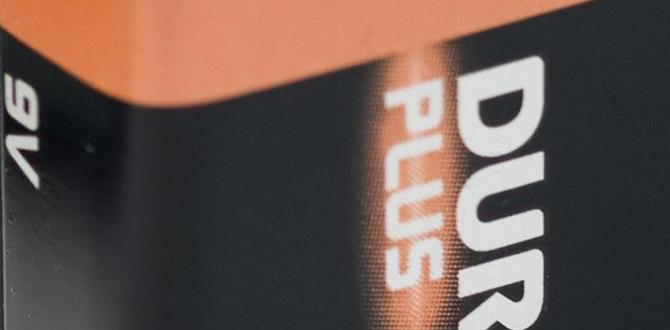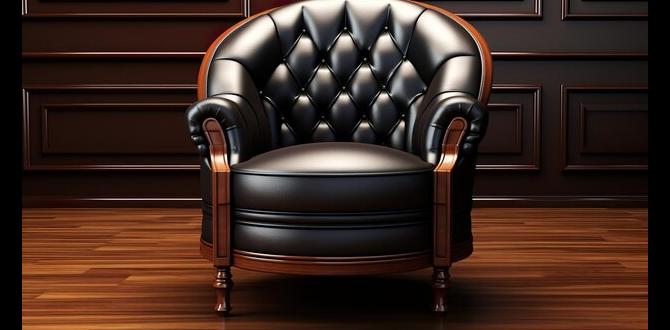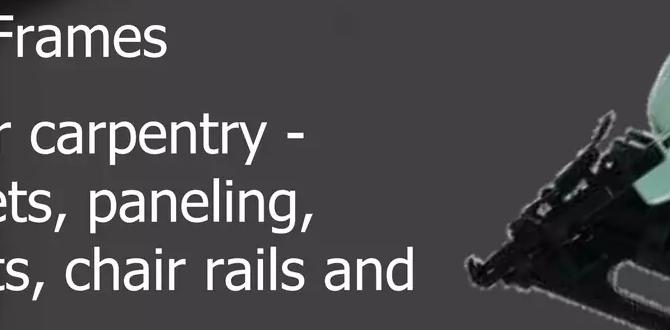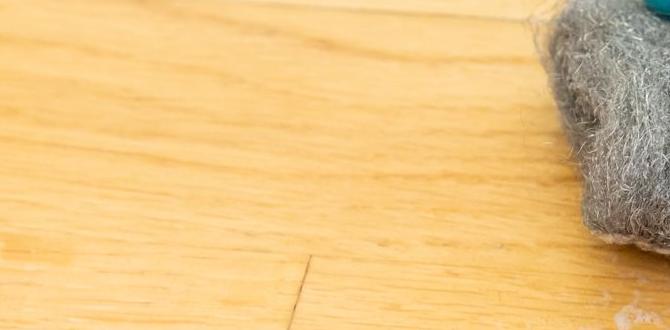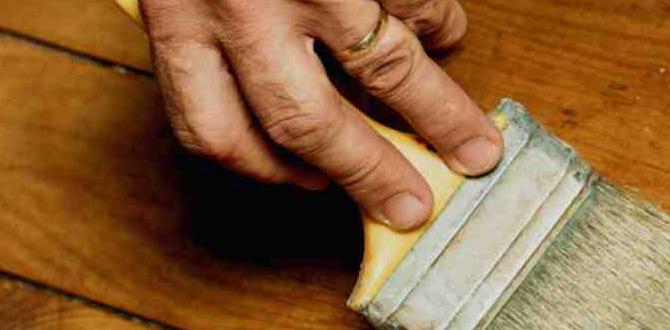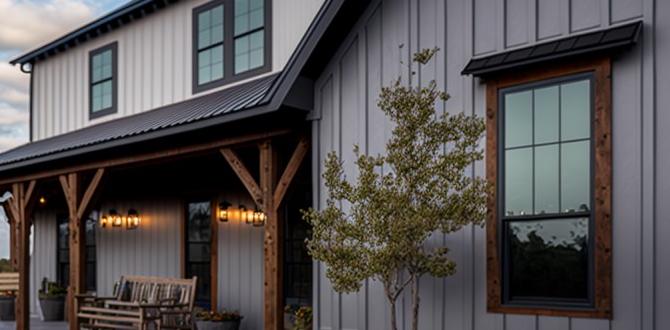Have you ever wondered how the right bandsaw blade pitch can change your projects? Choosing the correct bandsaw blade pitch is more important than many realize. It can mean the difference between clean cuts and frustrating mistakes. Imagine trying to slice through wood with a knife that’s too dull—it just won’t work well, right?
Here’s a fun fact: bandsaw blades have teeth spaced differently based on what you cut. Some blades have closely set teeth for fine cuts, while others have wider spacing for thicker materials. Picking the right one can make your work quicker and easier.
In this article, you will discover how to choose the best bandsaw blade pitch for your needs. You will learn which pitch works best for different materials and why it matters. With the right knowledge, you will cut like a pro!
Table of Contents
Choosing Correct Bandsaw Blade Pitch: A Comprehensive Guide
Selecting the right bandsaw blade pitch is crucial for achieving smooth cuts. A finer pitch suits smaller and more delicate materials, while courser pitch handles thicker cuts. When working with hardwood versus softwood, the pitch matters too! Did you know that using the correct pitch can reduce splintering? Understanding blade pitch helps in making safer cuts, improving efficiency, and extending your blade life. With the right choice, your projects can turn out exceptional!
Importance of Selecting the Right Blade Pitch
Impact on cutting efficiency and accuracy. Role in material type and thickness considerations.
Picking the right blade pitch is like choosing the best shoes for a dance party. If your shoes are too tight, you’ll stumble; if they’re too loose, you’ll trip! The correct pitch helps your bandsaw cut smoothly and accurately. It affects both efficiency and precision. Choosing the wrong pitch can make cutting thick wood harder than slicing butter with a dull knife, while a suitable pitch dances through any material like a pro!
| Material Type | Recommended Blade Pitch |
|---|---|
| Softwood | 3-4 TPI (Teeth Per Inch) |
| Hardwood | 4-6 TPI |
| Metal | 10-14 TPI |
Always consider the material and thickness before you start sawing. This way, you’ll get the clean, sharp cuts you desire without any hassle. Remember, the right blade pitch can make you feel like a cutting superstar!
Factors to Consider When Choosing Blade Pitch
Material properties (hardness, density). Thickness and dimensions of the workpiece. Type of cut (curved, straight, thick, thin).
Choosing the right bandsaw blade pitch can feel like picking toppings for a pizza—so many options! First, consider the material properties. Harder materials need a finer pitch, while softer ones can be tackled with a coarser blade. Next up: the thickness and size of your workpiece. Thicker pieces require a wider pitch to cut through easily. Also, think about the type of cut: curves call for finer blades, while straight cuts can handle something a bit heavier. Keep these factors in mind for a smooth and easy sawing experience!
| Factor | Recommended Pitch |
|---|---|
| Material Hardness | Finer Pitch |
| Material Density | Coarser Pitch |
| Thickness of Workpiece | Wider Pitch |
| Type of Cut | Finer for Curves, Coarser for Straight |
Types of Bandsaw Blade Pitches
Description of fine, medium, and coarse pitches. Specific applications for each type of pitch.
When picking a bandsaw blade pitch, it’s key to know the types. There are three main pitches: fine, medium, and coarse. Fine pitch blades have more teeth per inch, making them perfect for cutting hard materials like metals. Medium pitch blades are versatile, suitable for wood and some plastics. Coarse pitch blades have fewer teeth, ideal for thick materials, allowing quick cuts. Remember, using the right pitch is like choosing the right shoes for a dance – too tight or too loose and you’ll trip!
| Blade Pitch | Description | Best for |
|---|---|---|
| Fine | More teeth per inch, smooth cuts | Hard materials (metals) |
| Medium | Balanced teeth, versatile | Wood, some plastics |
| Coarse | Fewer teeth, fast cutting | Thick materials |
Common Mistakes in Blade Pitch Selection
Incorrect assumptions about material compatibility. Overlooking the influence of blade speed and tension.
Choosing the right bandsaw blade pitch can be tricky. Many people make mistakes. One common mistake is assuming all materials are the same. For instance, wood and metal need different blades. Another mistake is ignoring blade speed and tension. These factors greatly affect the cut quality. Using the wrong settings can lead to poor results.
- Always match blade pitch to your material.
- Check blade speed for the right cut.
- Adjust tension for best performance.
What materials need different blade pitches?
Wood, metal, and plastic each require different blade pitches for a smooth cut.
Why is blade speed important?
Blade speed controls how well the saw cuts through materials. Too fast or too slow can cause problems.
How to Calculate the Ideal Blade Pitch for Your Needs
Guidelines for determining the right pitch based on materials. Examples of common projects and suitable pitches.
Choosing the right blade pitch is key for your projects. The pitch affects how easily the blade cuts through different materials. Here are some guidelines to help you:
- For wood, a larger pitch works best.
- Use a medium pitch for soft metals.
- For thick materials, go for a smaller pitch.
For example, if you’re working with plywood, a pitch of 3-4 TPI (teeth per inch) is smart. But for intricate metalwork, a pitch of 10-14 TPI is ideal. This way, you ensure smooth and efficient cuts!
What pitch should I use for different materials?
Wood: 4-6 TPI, Plastic: 8-10 TPI, and Metal: 10-14 TPI are great starting points for best results.
Tuning Your Bandsaw for Optimal Performance
Adjusting tension and speed for specific blade pitches. Maintenance tips to extend blade lifespan.
Tuning your bandsaw can feel like conducting an orchestra. You want every part to play its role perfectly. Start by adjusting the tension for your blade pitch. Too loose, and you might get a wobbly cut. Too tight, and you risk snapping that expensive blade! Next, set the speed according to your blade pitch. Faster isn’t always better—think of it like dancing. Sometimes, slow and steady wins the race.
Maintenance plays a big part too. Keep your blades clean to prevent buildup. It’s like giving them a spa day! Also, regularly check the guides and rollers. A well-maintained bandsaw isn’t just happy; it’s a workhorse!
| Tip | Description |
|---|---|
| Tension Adjustment | Find the sweet spot—tight enough to cut, loose enough to last. |
| Speed Control | Match your speed to your blade pitch for smooth cutting. |
| Regular Cleaning | A clean blade is a happy blade! Remove dust and resin. |
Case Studies: Successful Blade Pitch Choices
Examples from professionals in woodworking, metalworking, etc.. Analysis of challenges faced and how proper pitch resolved them.
Many woodworkers faced issues with saw blades breaking too quickly. They discovered that a fine pitch blade helped them cut smaller pieces without damage. For metalworkers, a blade with a coarse pitch allowed for faster cutting through thicker materials. Here are some highlights:
- Woodworkers found smooth cuts by choosing the right pitch.
- Metalworkers improved efficiency with a suitable blade pitch.
- Challenges decreased as blade life increased with proper choices.
How does blade pitch affect cutting efficiency?
Blade pitch directly influences cutting speed and quality. A proper pitch helps reduce waste and extends blade life.
Conclusion
In summary, choosing the right bandsaw blade pitch is essential for effective cutting. A finer pitch works best for thin materials, while a coarser pitch suits thicker ones. Always consider the material you’ll cut. Experiment with different pitches to find what works best for you. For more tips, check out guides or videos on bandsaw blade selection!
FAQs
What Factors Should Be Considered When Selecting The Appropriate Pitch For A Bandsaw Blade?
When picking the right pitch for a bandsaw blade, think about what you’re cutting. The thickness of the material matters a lot. If the material is thick, you need a lower pitch with fewer teeth. For thinner materials, choose a higher pitch with more teeth. This helps you cut better and makes a smoother finish.
How Does The Material Being Cut Influence The Choice Of Bandsaw Blade Pitch?
The material you are cutting affects the bandsaw blade pitch. If you cut soft materials, like wood, you need a blade with fewer teeth. This helps cut faster. For hard materials, like metal, you want a blade with more teeth. This gives a smoother cut and helps avoid damage.
What Are The Benefits Of Using A Finer Pitch Blade Versus A Coarser Pitch Blade?
Using a finer pitch blade gives you smoother cuts. It helps cut through tough materials easily. This type of blade makes less noise, too. If you want neat edges, a finer pitch blade is the best choice!
How Do The Thickness And Type Of The Workpiece Impact The Bandsaw Blade Pitch Decision?
The thickness and type of your workpiece help you choose the right bandsaw blade pitch. If the material is thick, you need a blade with a wider pitch. This means the teeth are spaced farther apart, which helps cut faster. For thin materials, you should pick a blade with a smaller pitch. This helps you make smoother cuts without tearing the material.
Can Using The Wrong Bandsaw Blade Pitch Affect The Quality Of The Cut, And If So, How?
Yes, using the wrong bandsaw blade pitch can affect the cut’s quality. If the pitch is too fine, it can get stuck in the material. If it’s too coarse, it can leave rough edges. You want the right pitch for a smooth and clean cut. Choosing the correct blade makes your work easier and looks better.
